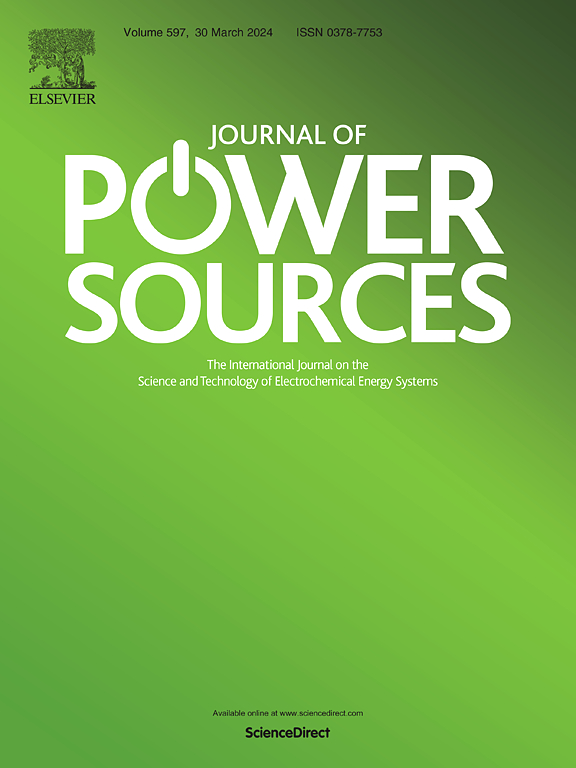Lithium nitrate reservoir enabling substantial improvement in the cycle life of anode-free and lithium metal batteries
IF 7.9
2区 工程技术
Q1 CHEMISTRY, PHYSICAL
引用次数: 0
Abstract
Li metal batteries attract significant attention owing to their high energy densities; however, the growth of Li dendrites and high reactivities of Li metal with liquid electrolytes lead to performance degradation and safety problems. As a solid electrolyte interphase (SEI)-forming additive for use in addressing these problems, LiNO3 stabilizes lithium metal by forming a robust, stable SEI on the Li anode surface. However, the use of LiNO3 is limited owing to its low degree of dissociation within the electrolyte. In this study, we propose a LiNO3 reservoir (LNR) that can store and continuously release LiNO3 into the electrolyte during charge-discharge cycling, which enables the formation and maintenance of a stable SEI layer on the lithium metal anode. Due to uniform Li deposition/stripping and the suppression of dendritic Li growth in the presence of the LNR, the anode-free and lithium (20 μm)/LiNi0.8Co0.1Mn0.1O2 cells with the LNR exhibit superior cycling performance compared to those of the cells without the LNR. The detailed mechanism of the substantial improvement in the cycling performance using the LNR is investigated using X-ray photoelectron spectroscopy, NMR spectroscopy, electrochemical impedance spectroscopy, and scanning electron microscopy.

硝酸锂储层可大幅提高无阳极电池和锂金属电池的循环寿命
锂金属电池因其高能量密度而备受关注;然而,锂枝晶的生长和锂金属与液体电解质的高反应性导致了性能下降和安全问题。作为解决这些问题的固体电解质界面(SEI)形成添加剂,LiNO3通过在锂阳极表面形成坚固、稳定的SEI来稳定锂金属。然而,LiNO3的使用受到限制,因为它在电解液中的解离程度很低。在本研究中,我们提出了一种LiNO3储层(LNR),它可以在充放电循环过程中储存并连续释放LiNO3到电解质中,从而使锂金属阳极上形成并维持稳定的SEI层。由于LNR的存在使锂离子的沉积/剥离均匀,并且抑制了锂枝晶的生长,因此与未添加LNR的电池相比,LNR的无阳极电池和锂(20 μm)/LiNi0.8Co0.1Mn0.1O2电池表现出更好的循环性能。利用x射线光电子能谱、核磁共振能谱、电化学阻抗能谱和扫描电镜研究了LNR循环性能显著改善的详细机理。
本文章由计算机程序翻译,如有差异,请以英文原文为准。
求助全文
约1分钟内获得全文
求助全文
来源期刊

Journal of Power Sources
工程技术-电化学
CiteScore
16.40
自引率
6.50%
发文量
1249
审稿时长
36 days
期刊介绍:
The Journal of Power Sources is a publication catering to researchers and technologists interested in various aspects of the science, technology, and applications of electrochemical power sources. It covers original research and reviews on primary and secondary batteries, fuel cells, supercapacitors, and photo-electrochemical cells.
Topics considered include the research, development and applications of nanomaterials and novel componentry for these devices. Examples of applications of these electrochemical power sources include:
• Portable electronics
• Electric and Hybrid Electric Vehicles
• Uninterruptible Power Supply (UPS) systems
• Storage of renewable energy
• Satellites and deep space probes
• Boats and ships, drones and aircrafts
• Wearable energy storage systems
 求助内容:
求助内容: 应助结果提醒方式:
应助结果提醒方式:


